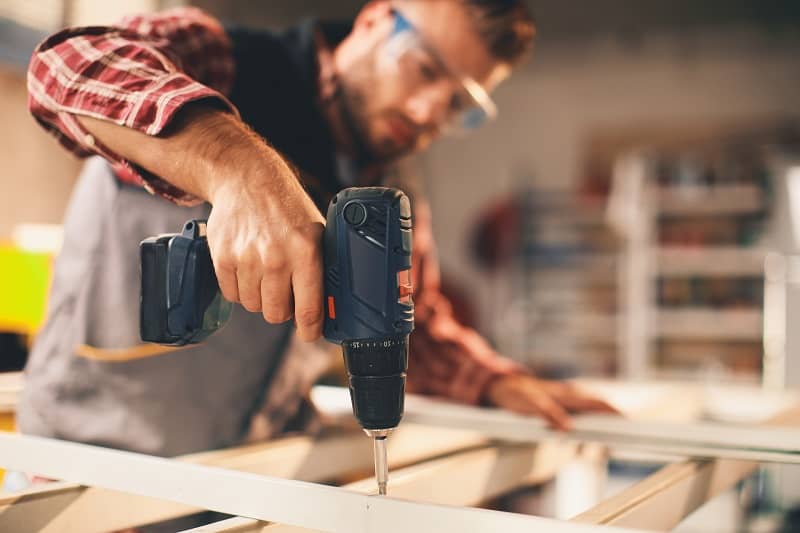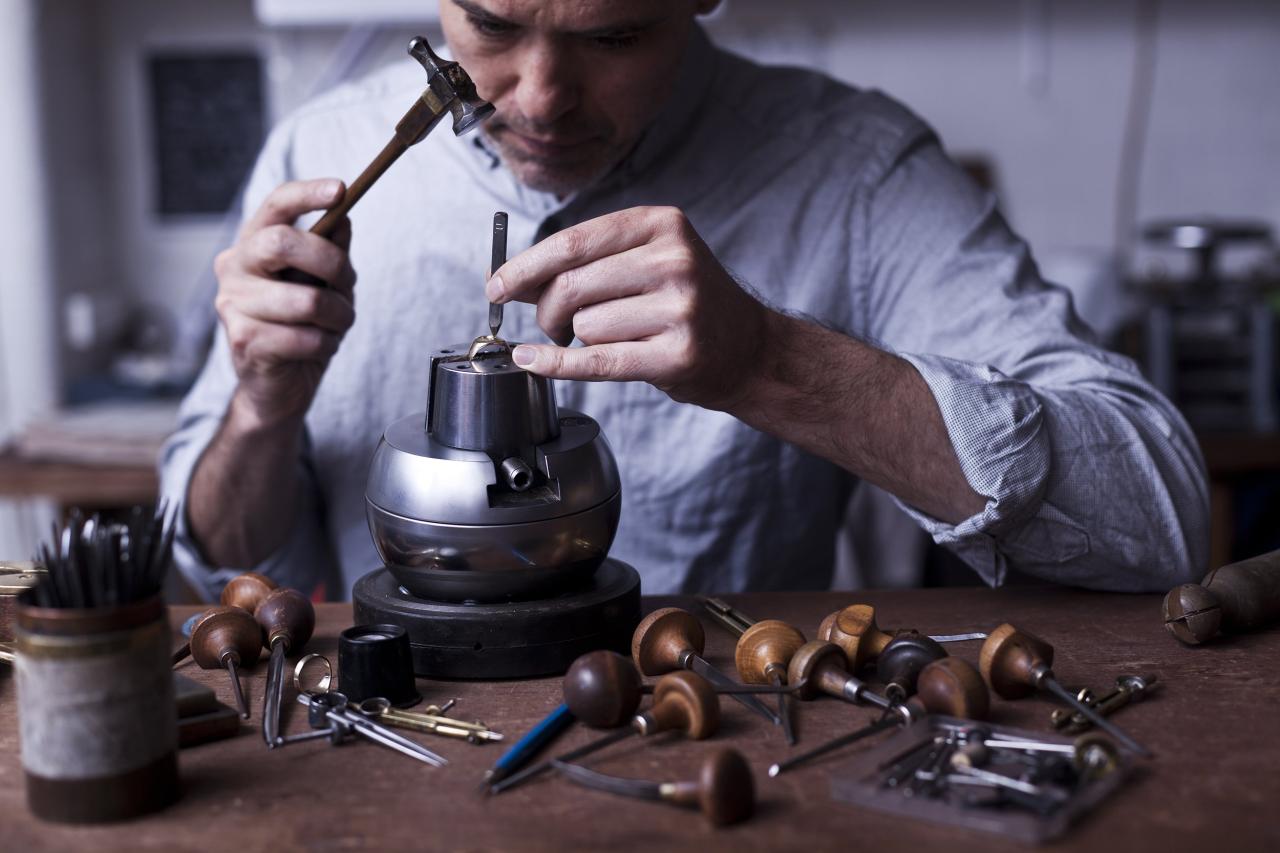Craftsman Tools Deliver Unparalleled Precision Power

In the evolving landscape of modern craftsmanship, where meticulous detail meets robust functionality, the right equipment makes all the difference. Craftsman Tech Tools represent a new era, seamlessly blending traditional reliability with cutting-edge innovation to deliver unparalleled precision power. No longer limited to basic hand tools, today’s artisans, builders, and DIY enthusiasts are leveraging smart devices, advanced diagnostics, and ergonomic designs to elevate their work to unprecedented levels of accuracy, efficiency, and safety. Understanding this technological renaissance – the tools redefining the workshop, their transformative benefits, and their profound impact on craftsmanship – is crucial for anyone dedicated to building, creating, or maintaining with superior quality.
The Digital Workshop

For centuries, craftsmanship relied on a mastery of basic tools, manual skill, and an intuitive feel for materials. While these foundational elements remain vital, modern Craftsman Tech Tools integrate digital precision and intelligent features, allowing for greater control, consistency, and innovative possibilities that were once unimaginable. It’s a deliberate fusion that honors the art of making while embracing the science of efficiency.
A. The Evolution of Craftsmanship Tools
The journey from rudimentary instruments to smart power tools reflects a broader societal shift towards automation, data, and user-centric design.
- Manual Era: Initially, tools were simple, human-powered devices – hammers, saws, chisels. Skill was entirely in the hands of the artisan.
- Mechanical Revolution: The invention of the internal combustion engine and electricity led to the first power tools, such as electric drills and circular saws, dramatically increasing efficiency and reducing physical labor.
- Precision Engineering: Advancements in manufacturing brought about higher precision in tool making, allowing for tighter tolerances and more reliable performance. Laser guides on saws, for instance, became early indicators of precision tech integration.
- Digital Integration and IoT: The current era is defined by the incorporation of microprocessors, sensors, and connectivity. Tools now feature digital readouts, smart controls, and even Wi-Fi connectivity, allowing for data logging, remote monitoring, and app-based control. The Internet of Things (IoT) is making tools smarter and more interconnected.
- Ergonomic Design: Modern tools are meticulously designed not just for power but also for user comfort, reducing fatigue and preventing repetitive strain injuries through balanced weight distribution, vibration dampening, and improved grips.
- Battery Technology: The development of powerful, long-lasting, and rapidly charging lithium-ion batteries has revolutionized cordless tools, offering unprecedented freedom and portability without sacrificing power.
B. Why Modern Tools Enhance Craftsmanship
The integration of technology into craftsman tools provides tangible benefits that elevate both the process and the final product.
- Unparalleled Precision and Accuracy: Digital measurements, laser guides, and automated settings virtually eliminate human error, ensuring cuts are perfectly straight, holes are drilled to exact depths, and angles are precisely aligned. This is critical for high-quality finished products.
- Consistency and Repeatability: Once a precise setting or sequence is established, tech tools can replicate it flawlessly across multiple pieces, ensuring uniformity in mass production or complex builds where identical parts are needed.
- Enhanced Efficiency and Time Saving: Automated features, quick-change systems, and powerful motors significantly reduce the time and effort required for tasks, allowing craftsmen to complete projects faster and focus on more intricate details or creative aspects.
- Expanded Capabilities and Creativity: Tools with advanced settings, interchangeable heads, or programmable functions allow craftsmen to perform tasks previously impossible or prohibitively difficult, pushing the boundaries of what can be created.
- Improved Safety Features: Smart sensors, automatic shut-offs, and advanced braking systems significantly reduce the risk of accidents, protecting the craftsman from injury.
- Data-Driven Optimization: Some tools log usage data, allowing professionals to analyze efficiency, monitor tool health, and optimize workflows for future projects.
- Accessibility: Automated and guided features can make complex tasks more accessible to beginners or those with physical limitations, lowering the barrier to entry for aspiring craftsmen.
The Arsenal of the Modern Craftsman
Today’s craftsman’s workshop is a blend of timeless hand tools and sophisticated tech, each playing a vital role in achieving superior results.
A. Precision Measurement and Layout Tools
Accuracy starts with the initial measurements and markings. Tech tools elevate this foundational step.
- Digital Measuring Tapes and Laser Distance Measurers:A. Instant Accuracy: Provide precise digital readouts of lengths, widths, and distances, eliminating misreading traditional tape measures.B. Laser Precision: Laser measurers quickly and accurately calculate distances up to hundreds of feet, perfect for large projects or awkward spaces, and some can calculate area/volume.
C. Memory Functions: Many digital tapes store previous measurements, preventing errors.
- Digital Angle Gauges and Levels:A. Exact Angles: Provide precise digital readings of angles (e.g., for miter cuts), ensuring perfect joints and alignments.B. Digital Levels: Offer highly accurate leveling across various surfaces, often with audible alerts or backlight displays for low-light conditions. Some connect to apps for remote readings.
- Smart Layout Tools (Emerging): Future tools might integrate AR or projection technologies to overlay digital blueprints directly onto materials, guiding precise cuts and placements.
B. Smart Cutting and Shaping Power Tools
These tools combine raw power with digital intelligence for unparalleled control.
- Smart Saws (e.g., Miter Saws, Table Saws):A. Digital Angle Displays: Highly accurate digital readouts for bevel and miter angles, ensuring precision cuts for joinery and trim.B. Laser Guides: Project a clear laser line onto the material, indicating the exact path of the blade for straight, accurate cuts.
C. Brake Systems: Advanced safety features that stop the blade almost instantly upon contact with skin (e.g., SawStop technology), preventing severe injury.
D. Dust Collection Ports: Optimized designs for connection to shop vacs, maintaining a cleaner and safer workspace.
- Cordless Power Tool Systems (Battery Tech):A. Lithium-Ion Dominance: High-capacity, fast-charging, and lightweight lithium-ion battery packs power entire ecosystems of drills, drivers, saws, sanders, and more.B. Brushless Motors: More efficient and powerful motors that run cooler and last longer than brushed motors, maximizing battery life and tool performance.
C. Smart Batteries/Apps: Some battery packs and tools connect to apps, allowing users to monitor battery health, track tool usage, locate tools, and even remotely disable them if lost or stolen.
- CNC Routers and Laser Cutters (Advanced Tech):A. Computer Numerical Control: These machines precisely cut, carve, and engrave materials based on digital designs, offering incredible detail and repeatability for complex projects.B. Automated Production: Ideal for creating intricate patterns, custom parts, or high-volume production with extreme accuracy.
C. Software Integration: Require design software (CAD/CAM) to create the digital files that guide the machine.
C. Advanced Assembly and Fastening Tools
Beyond simple drills, modern tools offer precision and efficiency for joining materials.
- Impact Drivers: Designed specifically for driving screws quickly and efficiently, delivering high torque without stripping screw heads. Often feature LED lights for better visibility.
- Smart Drills/Drivers:A. Torque Control: Digital settings for precise torque, preventing over-tightening or damaging materials.B. Drill Depth Stops: Some models feature integrated depth stops or digital readouts for consistent hole drilling.
C. Connected Features: App connectivity for tracking usage, battery life, and sometimes even customizing settings.
- Cordless Nail Guns/Staplers: Offer the power of pneumatic tools without the need for air compressors and hoses, increasing portability and speed for framing, trim work, and upholstery.
D. Digital Diagnostics and Inspection Tools
Seeing beyond the surface is critical for quality and troubleshooting.
- Thermal Imagers (Heat Guns with IR):A. Detecting Issues: Identify heat loss in homes, overheating electrical components, or moisture hidden behind walls, crucial for diagnostic work in renovations.B. Non-Contact Measurement: Safely measure surface temperatures from a distance.
- Inspection Cameras/Borescopes:A. Seeing in Tight Spaces: Flexible cameras with lights that can be inserted into walls, pipes, or engines to inspect inaccessible areas, crucial for diagnosing problems without destructive demolition.B. Digital Recording: Many can record video or take photos for documentation and sharing.
- Moisture Meters: Digitally measure the moisture content in wood, drywall, and other building materials, vital for preventing mold, ensuring proper drying, or selecting stable lumber for woodworking.
- Stud Finders with Advanced Sensors: Go beyond simple stud detection to identify electrical wiring, plumbing, and other obstructions behind walls, preventing dangerous accidents during drilling or cutting.
The Profound Impact for Craftsmanship and Industry

The integration of Craftsman Tech Tools isn’t just about individual improvements; it’s a systemic shift that impacts skill development, creative potential, and the very nature of various industries.
A. Elevating Quality and Professionalism
The precision afforded by tech tools directly translates into higher quality outputs and enhanced reputation.
- Superior Finish: Perfect cuts, precise angles, and consistent fastenings lead to a professional-grade finish that distinguishes expert work.
- Reduced Errors and Rework: Automation and digital guidance minimize costly mistakes, saving time, materials, and labor on rework.
- Enhanced Reputation: Consistently high-quality work builds a strong reputation, attracts more clients, and allows craftsmen to command premium pricing.
- Compliance with Standards: Precise measurements and consistent execution help craftsmen meet strict building codes, design specifications, and quality standards.
B. Boosting Efficiency and Productivity
Technology streamlines workflows, allowing craftsmen to accomplish more in less time.
- Faster Project Completion: Automated tasks, rapid measurements, and powerful cordless tools significantly reduce project timelines.
- Optimized Resource Use: Precision cutting minimizes material waste, leading to cost savings and more sustainable practices.
- Reduced Labor Strain: Ergonomic designs and power assistance lessen physical fatigue, allowing craftsmen to work longer, more comfortably, and with reduced risk of injury.
- Data-Driven Workflow Improvement: Professionals can analyze tool usage data to identify bottlenecks, optimize processes, and continuously improve their efficiency.
C. Expanding Creative Boundaries and Accessibility
By handling the foundational mechanics, technology frees the craftsman’s mind for greater innovation and artistic expression.
- Tackling Complex Designs: Tools like CNC routers allow for the creation of intricate patterns and complex geometries that would be impossible or prohibitively time-consuming with manual methods.
- Experimentation with Materials: Precise control enables experimentation with new or challenging materials, opening up fresh creative avenues.
- Prototyping and Iteration: Rapid prototyping with tech tools allows for quick testing and refinement of designs, accelerating the creative process.
- Lowering Barriers: Automated features and intuitive interfaces can make sophisticated craftsmanship more accessible to beginners, hobbyists, and individuals who might have previously been deterred by the physical demands or precision requirements of traditional methods.
The Human Element in Tech-Driven Craftsmanship
While Craftsman Tech Tools offer immense advantages, their integration also presents challenges that require thoughtful navigation and a balanced perspective.
A. Cost and Initial Investment
High-end tech tools can represent a significant financial barrier for some craftsmen.
- High Upfront Cost: Professional-grade smart tools, advanced CNC machines, or complete cordless tool ecosystems require substantial initial investment.
- Maintenance and Repair: Like all electronics, these tools require maintenance, software updates, and can be costly to repair if they malfunction, potentially leading to downtime.
- Battery Replacements: While powerful, lithium-ion batteries have a finite lifespan and replacing them can be expensive over time.
- Digital Divide: Access to reliable internet and technical literacy is required for smart tool connectivity and app-based features, which can exclude some potential users, particularly in less connected regions.
B. Skill Adaptation and Over-reliance
There’s a concern that over-reliance on technology might diminish fundamental manual skills and intuitive craftsmanship.
- Loss of Core Manual Skills: If craftsmen always rely on digital readouts and automated features, they might not develop the intuitive “feel” for materials, the muscle memory for freehand cuts, or the ability to troubleshoot problems without technology.
- Dependence on Technology: Smart tools rely on software, batteries, and connectivity. Any disruption (e.g., dead battery, Wi-Fi outage, software glitch) can render “smart” features unusable, potentially halting work.
- Training and Learning Curve: Mastering advanced tech tools requires significant training and a willingness to learn new interfaces and software, which can be a hurdle for craftsmen accustomed to traditional methods.
- Reduced Troubleshooting Skills: If a smart tool malfunctions, a craftsman might be at a loss without understanding the underlying principles it automates, relying solely on manufacturer support.
C. Cybersecurity and Data Privacy
The connectivity of smart tools introduces new concerns.
- Data Collection: Smart tools collect usage data, raising concerns about data privacy and how that information is used by manufacturers.
- Cybersecurity Vulnerabilities: Connected tools could potentially be vulnerable to cyberattacks, though this risk is generally low for most individual craftsmen.
- Software Updates and Obsolescence: Reliance on software means tools may require regular updates or could become obsolete if software support ends.
D. The Art vs. Automation Debate
Can technology truly replicate the subtle artistry and unique touch of a human craftsman?
- Loss of Unique Imperfections: Some argue that hyper-precision can lead to a sterile, uniform aesthetic, potentially diminishing the unique character and “soul” that human imperfections can bring to handcrafted items.
- Maintaining Artistic Control: While tools offer precision, the craftsman must ensure they remain the master, guiding the technology to execute their artistic vision, rather than being dictated by the tool’s capabilities.
- The Value of Manual Skill: The satisfaction and intrinsic value derived from mastering a traditional craft through manual skill remain powerful motivators for many.
The Future of Craftsmanship
The future of craftsmanship is not about technology replacing the artisan, but rather about a powerful collaboration between human skill, intuition, and advanced tools. It’s about augmenting human creativity with unprecedented precision and efficiency.
A. Smarter, More Intuitive Tools
The next generation of Craftsman Tech Tools will be even more intelligent, responsive, and seamlessly integrated into the workflow.
- Predictive Maintenance: Tools that monitor their own performance and alert users to potential issues before they cause downtime, or even order replacement parts automatically.
- AI-Powered Guidance: AI that can analyze user technique and provide real-time feedback for optimizing cuts, drills, or material handling, akin to a virtual mentor.
- Advanced Sensor Integration: Tools with embedded sensors that can detect material properties (e.g., density, moisture content) and automatically adjust settings for optimal performance.
- Robotics in Repetitive Tasks: Limited deployment of collaborative robots (cobots) for highly repetitive, precise, or dangerous tasks, freeing the craftsman for more creative or complex work.
B. Hyper-Personalization and Customization
Technology will increasingly cater to individual preferences and project-specific needs.
- Customizable Settings: Tools with deeply customizable digital settings that can be saved and recalled for specific projects or materials.
- Modular Systems: Tool systems with interchangeable components that can be reconfigured for different tasks, maximizing versatility and reducing the need for multiple single-purpose tools.
- 3D Printing for Custom Parts: More accessible and advanced 3D printing allows craftsmen to design and produce custom jigs, fixtures, or even functional components for their projects.
C. Sustainable Tooling and Practices
The industry will focus more on energy-efficient and environmentally conscious tools.
- Eco-Friendly Batteries: Development of more sustainable battery technologies with longer lifespans and easier recycling.
- Energy-Efficient Motors: Continued innovation in motor design for reduced energy consumption.
- Reparability and Longevity: Design of tools that are easier to repair and have longer lifespans, reducing electronic waste.
- Material Optimization: Software and tools that help craftsmen optimize material usage to reduce waste.
D. Blended Learning and Skill Development
Technology will continue to play a crucial role in craftsman education and skill development.
- Virtual Training: Immersive VR/AR simulations for learning complex tool operation or practicing dangerous tasks in a safe environment.
- AI-Driven Feedback: AI that can analyze video of a craftsman’s technique and provide real-time corrective feedback for skill improvement.
- Connected Communities: Enhanced online platforms where craftsmen can share projects, troubleshoot problems, and collaborate, leveraging smart tool data or sharing digital design files.
Conclusion
Craftsman Tech Tools are not just gadgets; they are catalysts, propelling the ancient art of making into a new era of precision power and innovation. By seamlessly blending traditional durability with digital intelligence, these tools are empowering artisans, builders, and hobbyists to achieve levels of accuracy, efficiency, and safety previously unattainable.
While challenges like initial cost, skill adaptation, and the balance between automation and human touch must be carefully navigated, the future of craftsmanship is undeniably collaborative. It’s a future where the intuitive mastery of the human hand is powerfully augmented by intelligent machines, allowing for greater creativity, flawless execution, and ultimately, even more remarkable creations. For those dedicated to the craft, understanding and embracing this technological evolution is key to not only maintaining relevancy but to actively shaping the next renaissance of building and design. The workshop is evolving, and with these tools, craftsmen are not just making things; they’re crafting the future.



